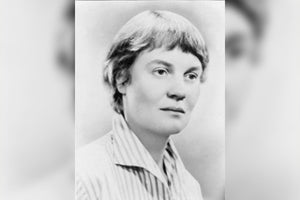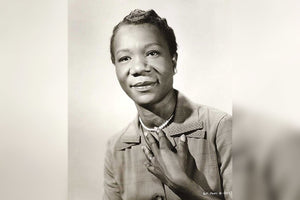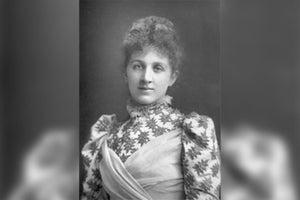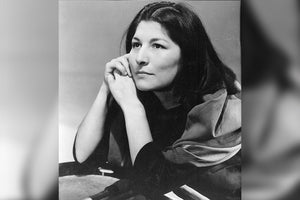Birthday: May 2, 1729
Who was Catherine the Great?
Catherine the Great was a German-born empress of the Russian Empire, ruling from 1762 to 1796. She was known to be the country’s longest-ruling female leader.
Five Facts About Catherine the Great
- She wasn’t Russian by birth – she was born as the eldest daughter of a Prussian prince.
- She came to power after a coup d’état to overthrow her husband, Peter the III.
- She ruled for 34 years, making her the longest-ruling female leader in all of Russian history.
- After the death of her husband, Peter the III, she never married again.
- She carried on the work of Peter the Great, greatly modernizing the Russian Empire and turning it into a formidable force.
Inspirational Quotes from Catherine the Great
“One does not always do the best there is. One does the best one can.”
“It is better to inspire a reform than to enforce it.”
“I beg you to take courage; the brave soul can mend even disaster.”
Catherine the Great’s Biography
Early Life
Born as Sophie Friederike Auguste, Prinzessin von Anhalt-Zerbst in 1729, she was the daughter of an impoverished Prussian prince, Christian August von Anhalt-Zerbst, and his wife, Princess Johanna Elisabeth of Holstein-Gottorp.
Her childhood was considered mostly uneventful, relating to a correspondent that there was nothing noteworthy in her earlier years. Despite being a Prussian princess, her family didn’t have much money, with her rise to power only being supported by her mother’s wealthy relatives, the dukes of Holstein.
Husband and Children
At age 14, she was selected to become the wife of her cousin, the Duke of Holstein-Gottorp, Karl Ulrich. They married in 1745, remaining so until 18 years later when a coup d’état saw her husband arrested and killed.
She had one son, the Grand Duke Paul, with her husband who also died after suffering a stroke and never regaining consciousness. Catherine the Great never married again, remaining the sole ruler of the Russian Empire until her death in 1796.
Turning Point
Upon her arrival in the Russian court in 1744, she assumed the title of Grand Duchess Catherine Alekseyevna and married her cousin, the duke Karl Ulrich (who was later known as Peter the III after inheriting the Russian throne) the following year in 1745.
The young Catherine found favor with the ruling Czarina Elizabeth and wasted no effort in ingratiating herself with her husband as well as the Russian people. Her intelligence, charm, and love for Russia garnered her much support from Empress Elizabeth as well as several others. After the Czarina died in 1762, her husband, now styled as the Emperor Peter the III inherited the Russian throne and quickly ended Russia’s participation in the war against Prussia, a feat that later led to the coup d’état that saw his abdication and later death. After her husband’s death, she was later crowned as the Empress of Russia, beginning a reign that lasted for 34 years. She assumed the title Catherine II.
Mission and Work
Despite her roots being that of a German princess, Catherine the Great was truly dedicated to the welfare of her adopted country. She dreamed of a court that rivaled that of the French Versailles, hoping for a reign that was ruled by justice and order and developing a national identity and culture that was uniquely Russian. She began her work as a great empress of Russia by replenishing the state treasury, doing so by secularizing the clergy’s properties and preserved friendly relations with her native Prussia, Austria, and France.
Later, in 1764, she installed a devotee to become the king of Poland, a kingdom whose boundaries were unclear and in danger of being taken over by three other powers.
Moreover, she also extended the boundaries of the Russian empire during her reign, absorbing several other countries at the expense of other kingdoms. Aside from this, she as also known for championing the arts, greatly contributing to the cultural background of her adopted country, and establishing a national identity that’s uniquely Russian.
Her efforts in expanding the influence of her adopted country made Russia a formidable country during her reign, allowing it to fully participate in the cultural and political life of modern Europe.
Death and Legacy
After ruling Russia for 34 years, Catherine the Great suffered a stroke and died the next day on November 17, 1796. Several rumors about her death were perpetrated by her critics in order to discredit her. Nevertheless, her legacy as one of Russia’s greatest rulers is still widely recognized today, with many Russians continuing to admire her and considering her and her works as a source of national pride. While non-Russians have less than favorable opinions of her, her contributions to the prosperity of the Russian Empire were significant enough to earn her the title of “Catherine the Great.”
![]() Fast Shipping
Fast Shipping![]() Subscribe to our Newsletter
Subscribe to our Newsletter![]() 🌟 New Global Competition 🌟
🌟 New Global Competition 🌟















